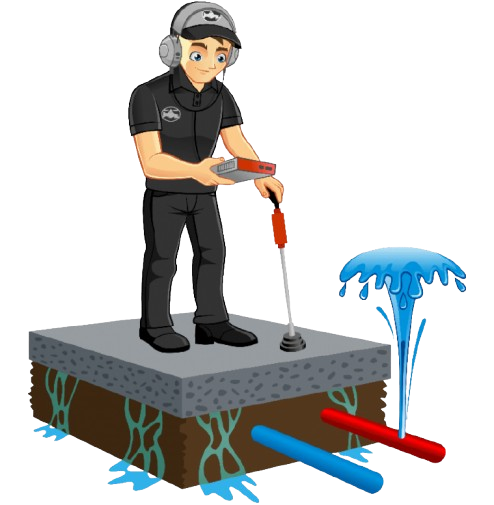Waterproofing Techniques: Innovative Coatings 2024
Waterproofing is a crucial aspect of maintaining the durability and structural integrity of buildings. Without proper waterproofing, moisture can infiltrate the building’s structure, leading to mold growth, material degradation, and costly repairs. To protect your property and ensure it remains weatherproof, it’s essential to implement effective techniques. In this article, we will explore the best methods that you can apply to both residential and commercial buildings.

What is Waterproofing?
Waterproofing is the process of making a structure impervious to water by using specific materials and systems. This prevents water from entering the building, whether from rainfall, groundwater, or other sources. Proper waterproofing can extend the lifespan of your building, prevent health hazards caused by mold and mildew, and reduce long-term maintenance costs.
Table of Contents
Types of Systems
1. Cementitious
Cementitious is one of the most common techniques used for waterproofing. It is typically applied to internal areas such as bathrooms, kitchens, and basements, where water exposure is high. This method involves using a mix of cement-based products that are applied directly to the surface to create a waterproof barrier.
- Advantages: Easy to apply, cost-effective, and readily available.
- Best Suited For: Internal wet areas like bathrooms and kitchens, and for surfaces like concrete.
- Drawbacks: Limited flexibility, as cement-based materials can crack under extreme temperature fluctuations or structural shifts.
2. Liquid
A liquid membrane is a thin coating, usually consisting of a primer coat and two topcoats applied on the surface. This flexible method provides more elasticity compared to cementitious , making it ideal for exterior surfaces.
- Advantages: Highly flexible, easy to apply, and forms a seamless barrier.
- Best Suited For: Roofs, balconies, terraces, and other outdoor surfaces.
- Drawbacks: Can be more expensive than other methods, and proper application is crucial for effectiveness.
3. Bituminous Coating
Also known as asphalt coating, this method is versatile and durable, often used for areas exposed to subterranean moisture. The coating provides a strong protective layer, making it ideal for foundations and retaining walls.
- Advantages: High resistance to water penetration and excellent adhesion to various surfaces.
- Best Suited For: Foundations, basements, and other underground structures.
- Drawbacks: Exposure to sunlight may weaken its effectiveness, so it’s not ideal for areas with direct sun exposure.
4. Bituminous Membrane
This technique is widely used in flat roofs and areas prone to heavy rainfall. Bituminous membranes are either self-adhesive or applied with a blowtorch, creating a solid, waterproof barrier. It is highly durable and resistant to environmental stress.
- Advantages: Durable, flexible, and provides a reliable barrier for water.
- Best Suited For: Flat roofs, balconies, terraces, and low-sloped surfaces.
- Drawbacks: Application requires precision, and the membrane can deteriorate with prolonged exposure to ultraviolet (UV) rays.
5. Polyurethane
Polyurethane is an extremely flexible and durable waterproofing material. It is often used for roofs and other exterior surfaces due to its ability to withstand UV radiation and weather conditions.
- Advantages: High flexibility, excellent resistance to UV rays, and seamless application.
- Best Suited For: Roofs, balconies, and terraces.
- Drawbacks: Can be more expensive than other methods, and surface preparation is crucial for success.
Techniques for Specific Areas
1. Basements and Foundations
Basements and foundations are particularly vulnerable to water infiltration due to their direct contact with the soil. The most effective way to waterproof these areas is through exterior waterproofing techniques, such as the application of a liquid waterproofing membrane or bituminous coating to the exterior walls.
- Interior Waterproofing: If moisture is already seeping into your basement, interior waterproofing methods like applying a waterproof sealant or installing a drainage system can be employed to manage the water and prevent further damage.
- Drainage Systems: Installing drainage systems like a French drain or sump pump ensures that any water accumulating near your foundation is diverted away from the structure, reducing the risk of water infiltration.
2. Roof
Roof waterproofing is vital to prevent leaks that can cause significant structural damage. Common roof waterproofing techniques include the use of bituminous membranes, polyurethane coatings, and liquid waterproofing membranes. These methods create a seamless, protective layer that ensures your roof remains watertight.
- Flat Roofs: Flat roofs are particularly prone to water pooling, which makes the application of waterproof membranes essential.
- Sloped Roofs: Waterproofing on sloped roofs often involves using shingles, tiles, or sheet membranes to direct water away from the roof surface.
3. Bathroom and Wet Area
Bathrooms are high-moisture areas, making them susceptible to water leaks and damage. Applying cementitious waterproofing products or liquid waterproofing membranes is key to preventing water from penetrating walls and floors.
- Shower Areas: Waterproof membranes should be applied beneath tiles in shower areas to ensure no water can seep into the walls or floors.
- Around Plumbing: Areas around plumbing fixtures should be sealed properly to avoid leaks from occurring in hard-to-reach places.
4. Balcony and Terrace
Balconies and terraces are exposed to both water and sunlight, making waterproofing crucial to prevent structural damage over time. Using liquid or bituminous membranes, which offer UV resistance and flexibility, is essential for these areas.
- Seamless Applications: Ensure that the application is seamless to avoid cracks where water can infiltrate.
- Slope Considerations: Creating a proper slope on your balcony or terrace can prevent water from pooling, reducing the risk of leaks.
Common Mistakes to Avoid
1. Inadequate Surface Preparation
Before applying any waterproofing system, it is essential to properly clean and prepare the surface. This ensures that the waterproofing material adheres effectively and provides the necessary protection.
2. Using the Wrong System
Selecting the right waterproofing system for your specific needs is crucial. For example, using a cementitious waterproofing system for a roof can lead to cracks and leaks due to its limited flexibility.
3. Ignoring Expansion Joints
Expansion joints allow the building to contract and expand due to temperature changes. Failing to waterproof these joints can lead to cracks and water seepage, compromising the entire structure.
Conclusion
Proper waterproofing is an essential part of protecting your building from water damage and ensuring its longevity. Whether you are waterproofing a roof, basement, or terrace, selecting the right materials and techniques will safeguard your property against moisture intrusion. By avoiding common waterproofing mistakes and choosing the correct
Call to Action: Ready to protect your home? Contact us today for expert advice and high-quality waterproofing solutions tailored to your needs!
Check out our Blogs
Check out our Instagram



Leave a Reply